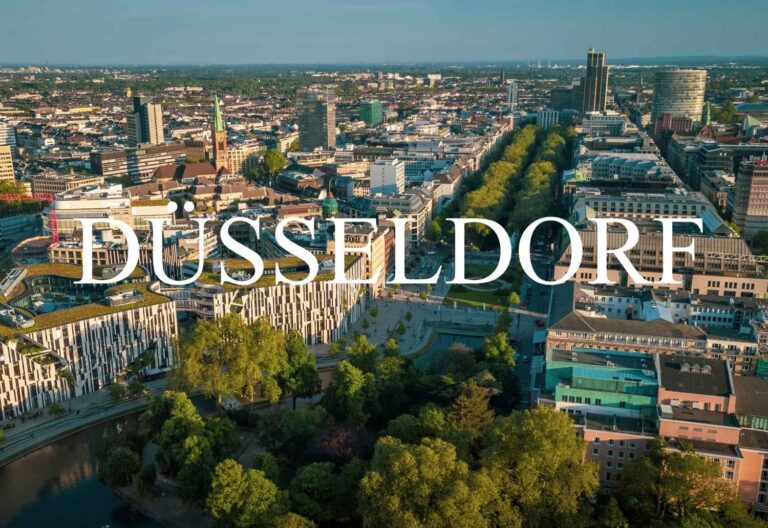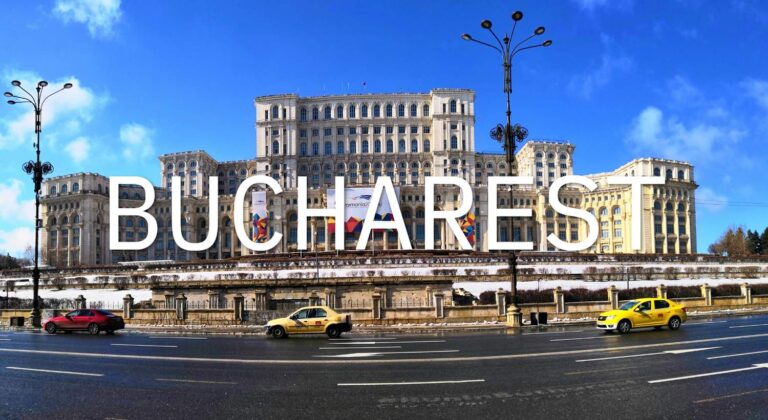
Edinburgh, the enchanting capital of Scotland, captivates visitors with its timeless blend of history, mystery, and vibrant culture. Steeped in medieval grandeur, this city boasts iconic landmarks like the majestic Edinburgh Castle perched atop Castle Rock, the historic Royal Mile lined with cobblestone streets, and the hauntingly beautiful Holyrood Palace. Beyond its storied past, Edinburgh thrives as a modern cultural hub, celebrated worldwide for its dynamic festivals including the renowned Edinburgh Fringe Festival and Hogmanay New Year celebrations.
Wander through winding alleyways and discover charming hidden courtyards, or take in sweeping views from Arthur’s Seat, an ancient volcanic hill that offers breathtaking panoramas of the city and surrounding landscapes. Edinburgh’s rich literary heritage, warm Scottish hospitality, and a buzzing culinary scene with cozy pubs and contemporary restaurants make it a destination that appeals to history buffs, adventure seekers, and culture lovers alike.
Whether exploring its historic sites, enjoying lively street performances, or simply soaking up the unique Scottish spirit, Edinburgh offers a magical experience that stays with you long after you leave.
🏰 Best Places to Visit in Edinburgh
Edinburgh Castle

Photo by Jörg Angeli on Unsplash
Perched atop the ancient volcanic rock of Castle Rock, Edinburgh Castle dominates the skyline of Scotland’s capital city and stands as a symbol of national pride, heritage, and resilience. With a history dating back over 1,000 years, this iconic fortress has witnessed battles, royal ceremonies, sieges, and scandals. Whether you’re drawn by its dramatic location, royal regalia, or sweeping views over Edinburgh, a visit to this legendary stronghold is a must when exploring Scotland.
🌟 Highlights of Edinburgh Castle
• 👑 The Crown Jewels & Stone of Destiny:
Step into the Crown Room to view Scotland’s Crown Jewels—a dazzling display including the crown, sceptre, and sword of state. Also on display is the Stone of Destiny, used in the coronation of Scottish and English monarchs, steeped in centuries of symbolism and intrigue.
• 🏰 The Great Hall:
Marvel at the grandeur of the Great Hall, completed in 1511 for King James IV. With its hammerbeam roof and medieval weaponry on display, it offers a glimpse into the castle’s royal past and ceremonial grandeur.
• 💣 One O’Clock Gun:
Don’t miss the daily firing of the One O’Clock Gun, a tradition that dates back to 1861. The gun fires every day (except Sundays, Good Friday, and Christmas) and was originally used to help ships set their clocks accurately.
• 🛡️ St. Margaret’s Chapel:
The oldest surviving building in Edinburgh, St. Margaret’s Chapel dates back to the 12th century. Small and simple, yet deeply historic, it’s a peaceful stop amid the fortress’s dramatic architecture.
• 🪦 National War Museum of Scotland:
Within the castle grounds, this museum showcases Scotland’s military history with fascinating exhibits including uniforms, weapons, and personal stories from soldiers across the centuries.
• 🌇 Panoramic City Views:
Standing on the castle ramparts, enjoy breathtaking views over Princes Street, the Old Town, and out to the Firth of Forth—ideal for stunning photos or a quiet moment of reflection.
🚶 How to Get There
• By Public Transport:
Edinburgh Castle is located at the top of the Royal Mile and is accessible via buses and trams stopping at Princes Street or Waverley Station, just a short uphill walk away.
• On Foot:
If you’re exploring the Old Town or the city center, the castle is easily reachable on foot. Walking up the Royal Mile is an experience in itself, lined with historic sites, shops, and street performers.
• By Car:
Driving is not recommended due to limited parking in the city center. However, paid parking is available at nearby Castle Terrace.
🕒 Visitor Information
• Opening Hours:
- April – September: 9:30 AM – 6:00 PM (last entry 5:00 PM)
- October – March: 9:30 AM – 5:00 PM (last entry 4:00 PM)
- Open daily except 25–26 December and 1 January.
• Time to Explore:
Allow 2–3 hours to explore the entire castle grounds, exhibitions, and enjoy the views. Guided and audio tours are available to enhance your visit.
💡 Travel Tips
• 📷 Bring a Camera:
The castle’s dramatic architecture, historic interiors, and hilltop views offer fantastic photo opportunities. Don’t miss golden hour shots over the city!
• 🧥 Dress for the Weather:
The weather in Edinburgh can change quickly. Bring a light waterproof jacket, especially if you’re visiting during the cooler or rainy months.
• 🎧 Use the Audio Guide:
Available in multiple languages, the audio guide provides fascinating insights into the castle’s long and turbulent history. It’s a worthwhile addition for first-time visitors.
• 🕰️ Arrive Early:
The castle gets busy, particularly in summer. Visit early in the day for a quieter experience and fewer crowds, especially around the Crown Jewels exhibit.
• 🛍️ Don’t Skip the Gift Shop:
Edinburgh Castle’s gift shop is one of the best for Scottish souvenirs, including high-quality tartan, books, and locally made items.
A visit to Edinburgh Castle is like stepping into the pages of Scottish history—dramatic, layered, and full of stories. From the ancient chapel to the regal Crown Jewels and spectacular city vistas, the castle offers something for everyone. Whether you’re a history buff, a photography enthusiast, or a curious traveler, this iconic landmark is an unmissable highlight of any trip to Scotland’s capital.
Royal Mile
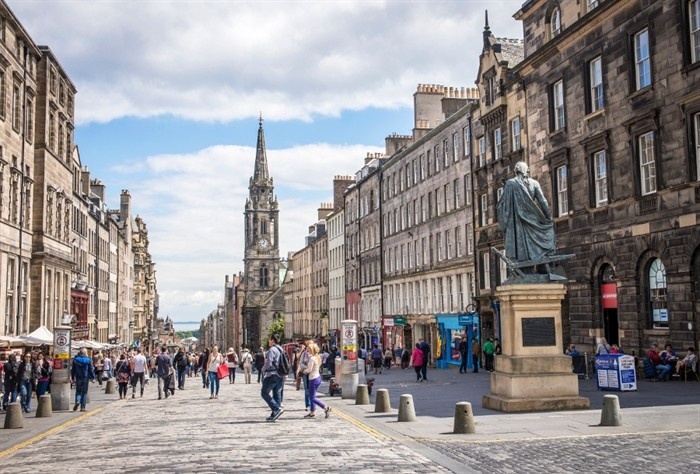
Stretching through the heart of Edinburgh’s Old Town, the Royal Mile is one of the most iconic and historic streets in Scotland. Running approximately one mile from Edinburgh Castle at the top to Holyrood Palace at the bottom, this atmospheric cobbled street is packed with history, culture, and character. Whether you’re looking to explore centuries-old buildings, enjoy street performances, shop for Scottish souvenirs, or simply soak up the medieval charm, the Royal Mile is a must-visit destination in Edinburgh.
🌟 Highlights of the Royal Mile
• 🏰 Edinburgh Castle:
Begin your Royal Mile journey at the legendary Edinburgh Castle, perched atop Castle Rock. From the Crown Jewels to sweeping city views, this fortress sets the tone for the mile of history that follows.
• 👑 Palace of Holyroodhouse:
At the opposite end of the Mile stands the official Scottish residence of the British monarch. Explore Holyrood Palace, the Queen’s Gallery, and the ruins of Holyrood Abbey in a tranquil setting at the base of Arthur’s Seat.
• 🏛️ St Giles’ Cathedral:
Located in the heart of the Royal Mile, St Giles’ Cathedral is known for its striking crown spire and beautiful stained glass. Step inside to admire the Thistle Chapel and the intricate architecture dating back to the 14th century.
• 🕵️ The Real Mary King’s Close:
For a taste of Edinburgh’s eerie past, take a guided underground tour through Mary King’s Close, a warren of preserved 17th-century alleyways beneath the Royal Mile. Fascinating and a bit spooky!
• 🛍️ Traditional Shops & Tartan Treasures:
The Royal Mile is lined with charming boutiques and stores selling kilts, cashmere, whisky, and tartan-themed souvenirs. It’s the perfect place to pick up gifts or something uniquely Scottish.
• 🎭 Street Performers & Festivals:
Especially during August’s Edinburgh Festival Fringe, the Royal Mile becomes a vibrant stage for musicians, actors, comedians, and magicians. Even outside the festival, it’s alive with energy and street artistry.
🚶 How to Get There
• By Public Transport:
The Royal Mile is easily accessible via Waverley Station, Edinburgh’s main train hub, which sits just off the middle of the street. Numerous bus routes also stop nearby.
• On Foot:
Most of Edinburgh’s Old Town is walkable, and the Royal Mile itself is best experienced on foot. Wear comfortable shoes—the cobbles can be uneven!
• By Taxi or Ride Share:
Taxis and Ubers are available, but due to the Mile’s pedestrian-heavy nature and occasional vehicle restrictions, walking remains the best option.
🕒 Visitor Information
• Opening Hours:
The Royal Mile itself is a public street and accessible 24/7. However, individual attractions (like museums, cathedrals, and guided tours) generally operate between 10:00 AM – 5:00 PM, with some seasonal variations.
• Admission Fees:
Walking the Royal Mile is free. Entrance to attractions like Edinburgh Castle, Holyrood Palace, or Mary King’s Close usually requires a ticket, priced individually.
• Time to Explore:
You can easily spend 3–5 hours or more exploring the length of the Royal Mile, depending on how many attractions and stops you choose to make along the way.
💡 Travel Tips
• 📸 Photo Hotspots:
The cobblestone streets, historic architecture, and panoramic views from Castle Hill offer plenty of Instagram-worthy moments. Early mornings or golden hour provide the best lighting (and fewer crowds).
• 👟 Wear Comfortable Shoes:
The Royal Mile slopes downward and has plenty of uneven stones. Opt for sturdy walking shoes or trainers.
• 🎟️ Book Tours in Advance:
Popular sites like Mary King’s Close and Holyrood Palace can sell out during peak times. Book tickets online ahead of your visit for a smoother experience.
• 🥘 Try Local Flavors:
Stop for a traditional Scottish meal at one of the many pubs and restaurants along the Mile. Try haggis, cullen skink, or a warming bowl of Scotch broth.
• 🌧️ Be Weather-Ready:
Edinburgh’s weather can change quickly. Bring a light raincoat or umbrella, even in summer.
A walk down the Royal Mile is like journeying through the soul of Edinburgh—where every stone has a story, and every corner reveals a blend of past and present. From towering castles to hidden closes, street performances to royal residences, the Mile captures the charm, mystery, and majesty of Scotland’s capital. Whether it’s your first visit or your fiftieth, the Royal Mile always has something new to discover.
Arthur’s Seat

Rising dramatically from the heart of the city, Arthur’s Seat is the highest point in Holyrood Park, offering panoramic views of Edinburgh and beyond. This ancient extinct volcano, standing at 251 meters (823 feet), is a favorite among hikers, nature lovers, and photographers alike. Its combination of natural beauty, geological history, and mythological intrigue makes Arthur’s Seat an unforgettable experience in Scotland’s capital.
🌟 Highlights of Arthur’s Seat
• 🌄 Breathtaking Views:
The summit of Arthur’s Seat rewards you with sweeping 360-degree views over Edinburgh, the Firth of Forth, and the surrounding Lothian countryside. On a clear day, you might even glimpse the Pentland Hills or distant Highlands.
• 🥾 Scenic Hiking Trails:
There are several paths to reach the top, ranging from easy strolls to steeper climbs. The main route from Dunsapie Loch offers a shorter, gentler ascent, while the steep climb from Holyrood Palace provides a more direct (and challenging) route to the summit.
• 🌋 Geological Wonder:
Arthur’s Seat is part of a volcanic formation over 350 million years old. Its rugged landscape, exposed rock, and surrounding crags are a haven for geology enthusiasts and a living lesson in Scotland’s natural history.
• 🏰 Ruins of St Anthony’s Chapel:
Along the way, you’ll pass the mysterious ruins of St Anthony’s Chapel, believed to date back to the 15th century. The crumbling stone structure, perched above St Margaret’s Loch, adds a touch of historic mystery to your hike.
• 🌼 Wildlife & Flora:
Holyrood Park is home to a variety of birds, insects, and native plants. In spring and summer, the hills are dotted with wildflowers and gorse, making for colorful scenery and great photo opportunities.
🚶 How to Get There
• By Public Transport:
Several buses stop near Holyrood Palace and Holyrood Park Road, both excellent starting points for Arthur’s Seat hikes. Edinburgh Waverley Station is a 15-minute walk away.
• On Foot:
If you’re already in the city center or exploring the Royal Mile, it’s easy to walk to Holyrood Park. The hike starts just behind Holyrood Palace.
• By Bike:
There are cycling paths leading to Holyrood Park, and bike racks near the palace. However, bikes are not allowed on most trails leading up Arthur’s Seat itself.
🕒 Visitor Information
• Opening Hours:
Holyrood Park is open year-round, 24/7. However, it’s best (and safest) to hike during daylight hours. Sunset and sunrise hikes are especially popular for the views and atmosphere.
• Admission Fees:
Visiting Arthur’s Seat is free of charge. No tickets are required.
• Time to Explore:
Allow 1.5 to 2.5 hours for a round-trip hike, depending on your chosen route and pace. Bring water, and give yourself extra time for photo stops at the summit.
💡 Travel Tips
• 👟 Wear Proper Footwear:
Trails can be rocky, steep, and slippery, especially after rain. Hiking boots or sturdy walking shoes are recommended.
• 🧥 Check the Weather:
Edinburgh’s weather is famously changeable. Bring a waterproof jacket, even on sunny days, and dress in layers. The summit can be windy and cool.
• 📷 Don’t Forget Your Camera:
Arthur’s Seat offers some of the best photo ops in Edinburgh. Sunrise and sunset are especially magical times to capture the view.
• 🚫 Safety First:
Stick to marked paths, especially in wet or windy conditions. Some edges near the summit are steep, and it’s best to avoid risky shortcuts.
• 🍎 Pack Snacks & Water:
There are no cafes or shops on the hill, so bring your own water and light snacks, especially if you’re planning a longer walk.
A hike up Arthur’s Seat is one of the most rewarding outdoor experiences in Edinburgh. It combines history, nature, and breathtaking views in a setting that feels both wild and accessible. Whether you’re an avid hiker or a casual explorer, standing atop this ancient volcano offers a unique perspective of the city—both literally and figuratively. It’s an essential stop for anyone wanting to experience the natural beauty that balances Edinburgh’s historic charm.
Holyrood Palace
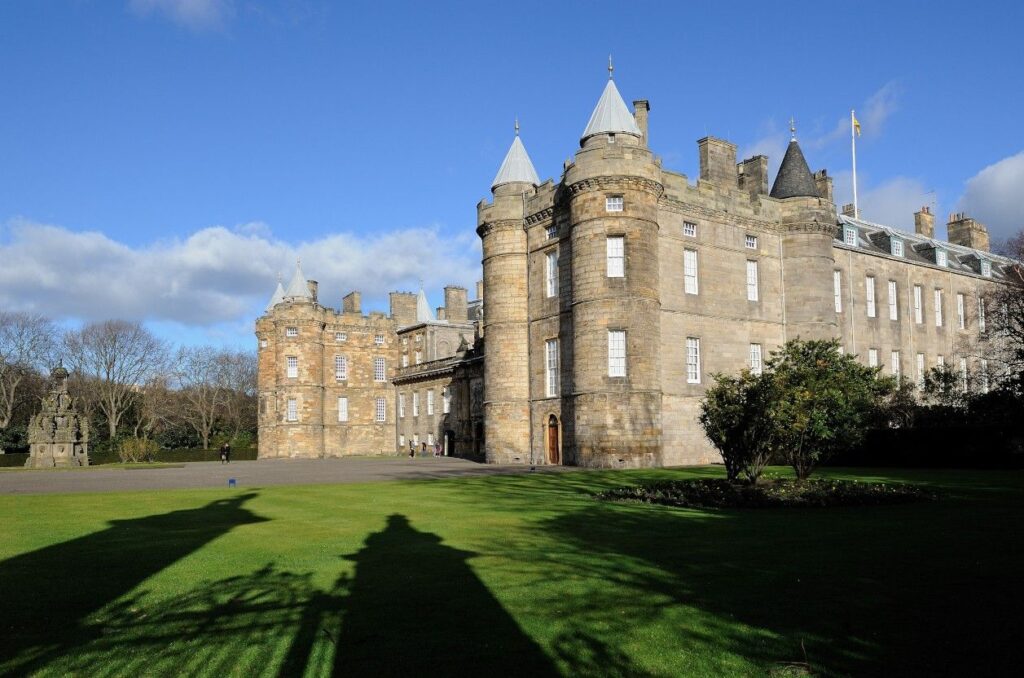
At the foot of the Royal Mile lies The Palace of Holyroodhouse, commonly known as Holyrood Palace—the official residence of the British monarch in Scotland. With its storied past, magnificent architecture, and beautifully maintained grounds, this historic palace offers a fascinating glimpse into Scotland’s royal heritage. Whether you’re drawn to tales of Mary, Queen of Scots, or just love exploring regal architecture, Holyrood Palace is a must-visit on any Edinburgh itinerary.
🌟 Highlights of Holyrood Palace
• 🏰 The State Apartments:
Walk through lavishly decorated rooms still used by the Royal Family today. The interiors are adorned with rich tapestries, antique furniture, and portraits of monarchs past—offering a regal atmosphere that’s both elegant and immersive.
• 🧵 Mary, Queen of Scots’ Chambers:
Step into the historic apartments of one of Scotland’s most iconic monarchs. These rooms have witnessed dramatic events, including the infamous murder of her secretary, David Rizzio, right in front of her eyes. The preserved interiors bring 16th-century court life to vivid life.
• 🌿 Holyrood Abbey Ruins:
Adjacent to the palace stand the romantic ruins of Holyrood Abbey, founded in 1128. Though roofless today, the structure remains atmospheric and is a favorite among photographers and history lovers alike.
• 🖼️ The Queen’s Gallery:
Located at the entrance to the palace, this public art gallery hosts rotating exhibitions of artwork and artifacts from the Royal Collection. Expect to see everything from classical paintings to rare manuscripts.
• 🌸 The Palace Gardens:
The 10-acre gardens offer a peaceful retreat in the heart of the city. They are especially lovely in spring and summer when flowers are in bloom, and the palace backdrop makes for stunning photos.
🚶 How to Get There
• By Public Transport:
Several buses stop near Holyrood Palace, including routes from Princes Street and Waverley Station. The Scottish Parliament building, directly opposite the palace, is a helpful landmark.
• On Foot:
Holyrood Palace is easily reached by foot from anywhere along the Royal Mile. It’s about a 15-minute walk from Edinburgh Castle, making it a perfect end-point for a day exploring the Old Town.
• By Bike:
Edinburgh’s city bike routes include paths to Holyrood Park. Bike racks are available near the palace, but cycling is not allowed inside the grounds.
🕒 Visitor Information
• Opening Hours:
Typically open daily from 9:30 AM to 6:00 PM (April to October), and 9:30 AM to 4:30 PM (November to March). Last admission is 1 hour before closing.
Note: The palace may be closed during official royal visits—check ahead on the official website.
• Time to Explore:
Plan for 1.5 to 2 hours to fully explore the palace, abbey ruins, gallery, and gardens.
💡 Travel Tips
• 🎧 Use the Free Audio Guide:
Included in your ticket, the audio tour provides excellent storytelling that brings the palace’s rooms and residents to life.
• 📷 Photography Rules:
Photography is not permitted inside the State Apartments, but you can take pictures in the gardens, abbey, and exterior areas.
• ☔ Be Weather-Wise:
Parts of the visit—like the abbey and gardens—are outdoors, so bring an umbrella or waterproof jacket, especially in unpredictable Edinburgh weather.
• 🛍️ Visit the Gift Shop:
The palace gift shop offers locally made souvenirs, royal-themed gifts, and exclusive merchandise tied to the Royal Collection.
• 🥪 Nearby Cafés:
While there’s no on-site café inside the palace, you’ll find several charming cafés and tea rooms nearby along the Royal Mile or in the Scottish Parliament building.
Visiting Holyrood Palace is like stepping into the pages of Scotland’s royal history. With its striking architecture, storied past, and regal atmosphere, it offers a quieter, more reflective counterpoint to the grandeur of Edinburgh Castle. Whether you’re intrigued by Mary, Queen of Scots, enchanted by medieval ruins, or simply looking for a peaceful escape, Holyrood is a destination that leaves a lasting impression.
National Museum of Scotland

Located in the heart of Edinburgh’s Old Town, the National Museum of Scotland is one of the country’s most captivating and diverse cultural attractions. With world-class exhibits ranging from Scottish history and natural sciences to global cultures, design, and technology, this museum offers a rich and engaging experience for visitors of all ages. Whether you’re a history buff, a family with curious kids, or a design enthusiast, you’ll find something to spark your imagination here.
🌟 Highlights of the National Museum of Scotland
• 🐘 Natural World Galleries:
From towering dinosaur skeletons to exotic animals and ancient fossils, these galleries take you on a thrilling journey through Earth’s natural history. The life-sized T. rex skeleton and a full-scale replica of a Tyrannosaurus skull are must-sees for young explorers and dinosaur fans alike.
• ⚙️ Science & Technology Exhibits:
Interact with hands-on displays showcasing space exploration, robotics, and energy. Discover Dolly the Sheep—the world’s first cloned mammal—and explore how Scottish innovation has shaped the modern world.
• 🏴 Scottish History & Archaeology:
Delve into Scotland’s story from prehistoric times to modern day. See medieval armor, Celtic artifacts, and the iconic Lewis Chessmen—carved pieces dating back to the 12th century, brimming with Norse charm and mystery.
• 🌍 World Cultures Gallery:
Travel the globe without leaving Edinburgh. These galleries showcase fascinating objects from Asia, Africa, the Americas, and Oceania, including ancient Egyptian artifacts and Japanese samurai armor.
• 🎨 Art, Design & Fashion:
Explore the evolution of style and creativity through decorative arts, contemporary fashion pieces, and centuries of craftsmanship. From traditional textiles to futuristic design concepts, the collection celebrates artistic expression in all forms.
• 🌆 Stunning Architecture & Rooftop Terrace:
Housed in both a modern wing and a stunning 19th-century Victorian building, the museum is a visual delight. Don’t miss the rooftop terrace, which offers beautiful panoramic views over Edinburgh’s skyline.
🚶 How to Get There
• By Public Transport:
The museum is a short walk from Edinburgh Waverley Station. Several Lothian bus routes stop nearby, including on South Bridge and Chambers Street.
• On Foot:
Centrally located in the Old Town, it’s easily walkable from the Royal Mile, Grassmarket, and other historic city spots.
• By Bike:
There are bike racks available on Chambers Street. Note that cycling is not allowed inside the museum premises.
🕒 Visitor Information
• Opening Hours:
Open daily from 10:00 AM to 5:00 PM, including weekends. Last entry is typically around 4:30 PM.
• Admission Fees:
Free entry for all visitors. Some special exhibitions may require a paid ticket—check the museum’s website for current events.
• Time to Explore:
You could spend anywhere from 2 to 4 hours here. Families might stay longer due to the interactive exhibits and kids’ discovery zones.
💡 Travel Tips
• 🗺️ Grab a Floor Map:
The museum is large and multi-leveled—pick up a map at the entrance or download one from the website to make the most of your visit.
• 📷 Photography Friendly:
Non-flash photography is allowed in most areas, so bring your camera for snaps of unique exhibits and the view from the terrace.
• 🧒 Family-Friendly Fun:
The museum offers interactive zones, kid-friendly displays, and activity stations that make learning fun and engaging for all ages.
• 🥪 Café & Picnic Options:
There’s a café on site with light meals, coffee, and snacks. Alternatively, grab takeaway nearby and picnic in nearby Greyfriars Kirkyard or The Meadows.
• 🛍️ Museum Gift Shop:
The well-stocked shop offers educational toys, Scottish-themed souvenirs, books, and design items—perfect for thoughtful gifts.
Whether you’re looking to understand Scotland’s past, marvel at world cultures, or let your kids run wild in a creative space, the National Museum of Scotland is an all-in-one treasure trove. It’s free, fascinating, and fun—making it one of the top indoor experiences in Edinburgh. Give yourself enough time to truly explore its wonders, and don’t forget to take in the skyline from the rooftop terrace for the perfect end to your visit.
Calton Hill

Rising gracefully at the eastern end of Princes Street, Calton Hill offers some of the most iconic panoramic views in Edinburgh. Known for its striking neoclassical monuments, sweeping cityscapes, and romantic sunsets, Calton Hill is both a peaceful retreat and a photographer’s paradise. Whether you’re a history lover, nature seeker, or looking for the perfect Instagram shot, Calton Hill is a must-see when visiting Scotland’s capital.
🌟 Highlights of Calton Hill
• 🏛️ National Monument of Scotland:
Often dubbed “Scotland’s Disgrace” because it was never fully completed, this Parthenon-inspired monument was intended to honor Scottish soldiers who died in the Napoleonic Wars. Today, its massive columns are a beloved backdrop for photos and a symbol of the city’s bold ambitions.
• 🔭 Nelson Monument:
Climb the spiral staircase of this 105-foot tower for even more incredible views. Built to commemorate Admiral Lord Nelson’s victory at the Battle of Trafalgar, the tower also features a time ball that drops daily at 1 PM—historically used to signal ships in the harbor.
• 🏙️ Panoramic Views of Edinburgh:
Calton Hill is one of the best spots to take in sweeping views of the Edinburgh skyline, including Arthur’s Seat, Holyrood Palace, the Firth of Forth, and the historic Old and New Towns.
• 🖼️ Collective Art Gallery:
Located in the former City Observatory, this contemporary art space features rotating exhibitions and a rooftop viewing platform. It’s a great place to discover emerging artists while enjoying architectural history.
• 🌳 Grassy Slopes and Peaceful Paths:
Whether you’re picnicking, taking a morning stroll, or just relaxing with a book, Calton Hill offers serene green spaces just minutes from the bustling city center.
🚶 How to Get There
• By Public Transport:
Several Lothian buses stop near Regent Road and Leith Street, both just a short walk to the hill’s base.
• On Foot:
Easily reachable from Princes Street, Waverley Station, or the Royal Mile—just a 5-10 minute walk. Follow the signposted footpaths from Regent Road or Royal Terrace.
• By Bike:
Cycle to the foot of the hill, then park your bike before walking up. Note: bikes are not permitted on the summit paths.
🕒 Visitor Information
• Opening Hours:
The hill is open 24/7, with no entrance fee. It’s a public park, so you can visit at sunrise, sunset, or even under the stars.
• Time to Explore:
Allow 1 to 2 hours for a relaxed visit—more if you plan to explore the monuments, visit the art gallery, or simply unwind with a view.
💡 Travel Tips
• 📸 Golden Hour Views:
Visit at sunrise or sunset for magical light and fewer crowds. The soft glow over the city makes for incredible photos and a peaceful experience.
• 🧥 Bring a Jacket:
Even on sunny days, the summit can be windy. Dress in layers or bring a light jacket, especially in the evenings.
• 👟 Wear Comfortable Shoes:
The path to the top is short but steep. Good walking shoes will make the climb more comfortable, especially if the ground is damp.
• 🧺 Perfect Picnic Spot:
Pack a lunch or snacks and enjoy a picnic with a view. Just remember to take your litter with you to help keep the area clean.
• 📖 Look Out for Plaques:
Informational signs and plaques throughout the site share fascinating insights into the monuments and Edinburgh’s Enlightenment era.
Whether you’re climbing up for a peaceful break, soaking in city views, or uncovering Scotland’s architectural ambitions, Calton Hill is a quintessential Edinburgh experience. It’s free, accessible, and breathtaking year-round—a place where history and nature meet high above the city streets. Don’t miss the chance to sit on a column, watch the sky change colors, and feel the pulse of Edinburgh from above.
Dean Village
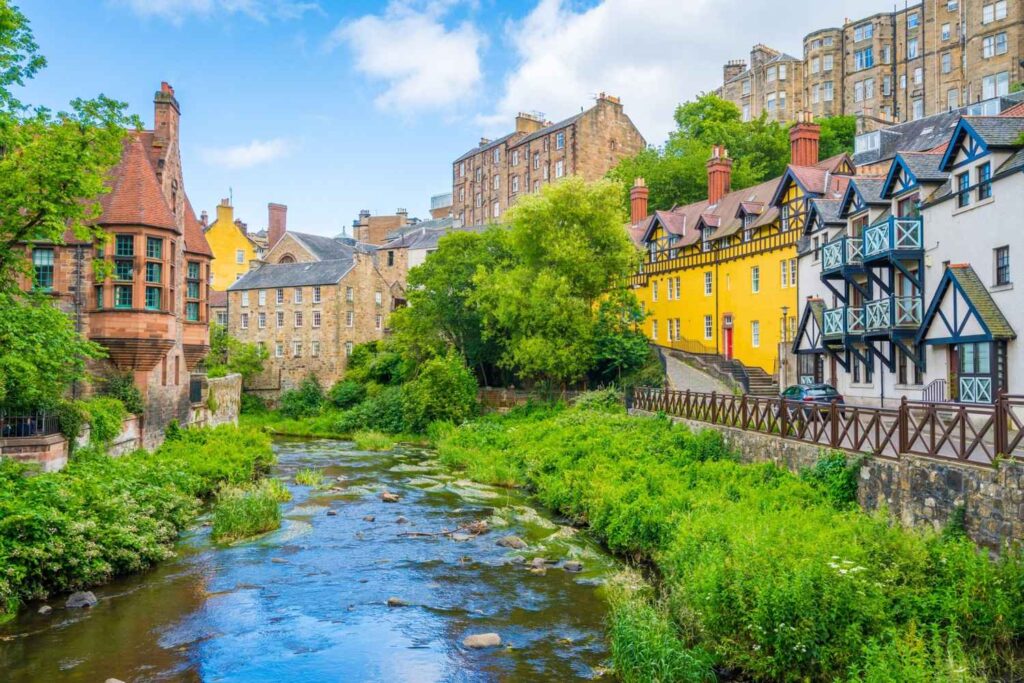
Tucked away just a short walk from the city center, Dean Village feels like stepping into a storybook. This peaceful, picturesque neighborhood along the Water of Leith was once a milling village and now offers a unique blend of natural beauty, historic charm, and tranquility. With cobbled streets, stone cottages, and ivy-clad buildings, Dean Village is a perfect escape from Edinburgh’s busier tourist areas.
🌟 Highlights of Dean Village
• 🏡 Historic Architecture:
Dean Village dates back to the 12th century and served as a grain milling hub for over 800 years. Today, its well-preserved 19th-century buildings, including the stunning Well Court, give visitors a glimpse into Edinburgh’s industrial past.
• 🌊 Water of Leith Walkway:
The gently flowing Water of Leith winds through the village, offering a serene riverside path ideal for walking or cycling. It connects Dean Village to other scenic spots like the Scottish National Gallery of Modern Art and Stockbridge.
• 🧱 Well Court:
One of the most iconic sights in Dean Village, Well Court is a red sandstone residential building built in the 1880s for mill workers. Its fairytale-like facade and central courtyard make it a favorite spot for photography.
• 🌉 Dean Bridge:
Designed by Thomas Telford in the 1830s, this grand bridge towers over the Water of Leith. It’s best admired from below, where you can take in the sheer scale and grace of its architecture while listening to the gentle river sounds.
• 🌳 Natural Serenity:
Despite its central location, Dean Village is incredibly quiet and green, making it a peaceful place for a morning stroll, picnic, or simply unwinding by the water with a book.
🚶 How to Get There
• By Public Transport:
Several Lothian buses (such as routes 41 and 47) stop near Queensferry Street or Randolph Crescent, just a few minutes’ walk from Dean Village.
• On Foot:
From Princes Street, it’s a pleasant 10–15 minute walk westward. Follow signs for the Water of Leith or walk toward Belford Road.
• By Bike:
The Water of Leith Walkway is bike-friendly, though you may need to walk your bike through the narrow, cobbled streets of Dean Village itself.
🕒 Visitor Information
• Opening Hours:
Dean Village is a residential neighborhood, so it’s always open to visitors. It’s best explored during daylight hours for safety and to fully enjoy the scenery.
• Admission Fees:
There’s no cost to visit Dean Village—it’s free and open to the public.
• Time to Explore:
You can spend 30 minutes to 1 hour here, or more if you combine it with a walk along the Water of Leith to nearby attractions like the Modern Art Gallery or Stockbridge Market.
💡 Travel Tips
• 📷 Bring Your Camera:
Dean Village is one of the most photogenic places in Edinburgh. Early morning or late afternoon light creates the best mood for photography.
• 🤫 Respect Residents:
It’s a peaceful living area, so keep noise to a minimum and stay on public paths—some areas are private property.
• 👟 Wear Comfortable Shoes:
The cobbled streets and stone paths can be uneven. Comfortable walking shoes are a must.
• 🧭 Explore Beyond:
Continue along the Water of Leith Walkway to discover other hidden gems like St Bernard’s Well, Stockbridge, or the Modern Art galleries.
• 🌧️ Check the Weather:
This area can be damp and slippery after rain, so bring an umbrella or raincoat and tread carefully if the path is wet.
Dean Village is a true hidden gem—a quiet sanctuary where history, architecture, and nature come together. It’s a short walk from the city buzz, yet it feels a world away. Whether you’re looking to relax, take beautiful photos, or enjoy a peaceful riverside walk, Dean Village delivers a gentle kind of magic that lingers long after you’ve left.
🗓️ Best Time to Visit Edinburgh
The best time to visit Edinburgh depends on your interests:
- Summer (June to August): Ideal for festivals like the Edinburgh Fringe Festival and the Royal Edinburgh Military Tattoo. Expect lively crowds and long daylight hours.
- Spring (April to May): Pleasant weather, blooming gardens, and fewer tourists.
- Autumn (September to October): Mild temperatures, golden foliage, and a quieter city.
- Winter (November to February): If you love festive vibes, visit in December for the Edinburgh Christmas Market and Hogmanay (New Year celebrations). Snow occasionally blankets the city, adding a magical touch.
💷 Currency in Edinburgh
- The local currency is the British Pound Sterling (£).
- Scotland prints its own banknotes, which are legal tender across the UK.
- Credit/debit cards are widely accepted, and ATMs are easily accessible.
- Tipping is appreciated but not mandatory; around 10–15% at restaurants is standard.
🧳 Travel Tips for Edinburgh
- Getting Around: The city is compact and walkable. Public transport (buses and trams) is reliable and affordable.
- Language: English is the primary language, but you may hear Scots or Gaelic spoken occasionally.
- Weather: Pack for all seasons – even in summer, a rain jacket and layers come in handy.
- Safety: Edinburgh is generally safe, but like any city, keep an eye on your belongings in crowded places.
Final Thoughts
Edinburgh is not just a destination—it’s a feeling. Whether you’re exploring ancient castles, hiking scenic hills, or enjoying a pint in a cozy pub, the city welcomes you with open arms and endless stories. From its rich heritage to its contemporary charm, Edinburgh deserves a top spot on every traveler’s bucket list.

I’m Shreyash Mhashilkar — a full-stack developer by profession, and a passionate explorer of the future at heart.
With a strong foundation in both front-end and back-end , I spend my days building websites and applications that are not just functional, but scalable, intuitive, and user-focused.


